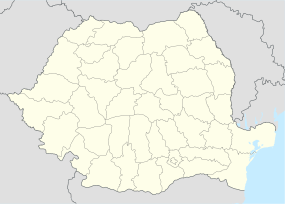Zarmizegethusa Regia

Ruins of Dacian temples
|
|
| Alternate name | Dacian capital, Sarmisegetusa, Sarmizegethusa, Sarmisegethusa, Sarmisegethuza, Sarmageze, Sarmategte, Sermizegetusa, Zarmizegethusa, Zarmizegethousa, Zarmizegetusa, Zermizegethouse |
|---|---|
| Location | Grădiștea de Munte, Hunedoara County, Romania |
| Coordinates | 45°37′19″N 23°18′33″E / 45.6219°N 23.3093°ECoordinates: 45°37′19″N 23°18′33″E / 45.6219°N 23.3093°E |
| Altitude | 1,030 m (3,379 ft) |
| History | |
| Abandoned | 2nd century AD |
| Events | Trajan's Dacian Wars, Battle of Sarmizegetusa |
| Site notes | |
| Archaeologists | |
| Condition | Partially reconstructed |
| Reference no. | 906 |
| Reference no. | HD-I-s-A-03190 |
Sarmizegetusa Regia, also Sarmisegetusa, Sarmisegethusa, Sarmisegethuza, Ζαρμιζεγεθούσα (Zarmizegethoúsa) or Ζερμιζεγεθούση (Zermizegethoúsē), was the capital and the most important military, religious and political centre of the Dacians prior to the wars with the Roman Empire. Erected on top of a 1200 m high mountain, the fortress, comprising six citadels, was the core of a strategic defensive system in the Orăştie Mountains (in present-day Romania).
Sarmizegetusa Regia should not be confused with Ulpia Traiana Sarmizegetusa, the Roman capital of Dacia built by Roman Emperor Trajan some 40 km away, which was not the Dacian capital. Sarmizegetusa Ulpia was discovered earlier, was known already in the early 1900s, and was initially mistaken for the Dacian capital, a confusion which led to incorrect conclusions being made regarding the military history and organization of the Dacians.
Several hypotheses have been advanced to explain the origin of the name Sarmizegetusa. The most important of these ascribe the following possible meanings to the city's name:
Sarmizegetusa Regia contained a citadel and residential areas with dwellings and workshops as well as a sacred zone.
The archaeological inventory found at the site demonstrates that Dacian society had a relatively high standard of living.
Historical records show considerable variation in the spelling of the name of the Dacian capital:
Towards the end of his reign, Burebista transferred the Geto-Dacian capital from Argedava to Sarmizegetusa. Serving as the Dacian capital for at least one and a half centuries, Sarmizegethusa reached its zenith under King Decebal. Archeological findings suggest that the Dacian god Zalmoxis and his chief priest had an important role in Dacian society at this time. They have also shed new light on the political, economic and scientific development of the Dacians and their successful assimilation of technical and scientific knowledge from the Greek and Romans.
The site has yielded two especially notable finds:
...
Wikipedia

